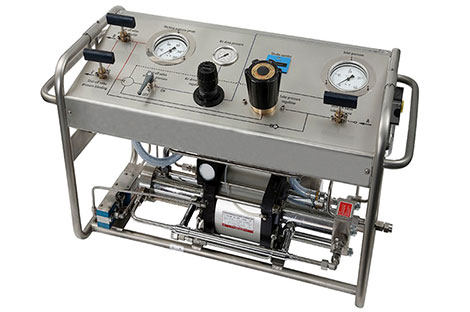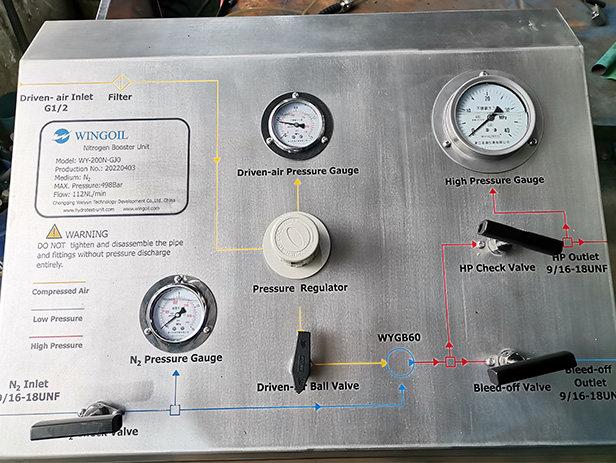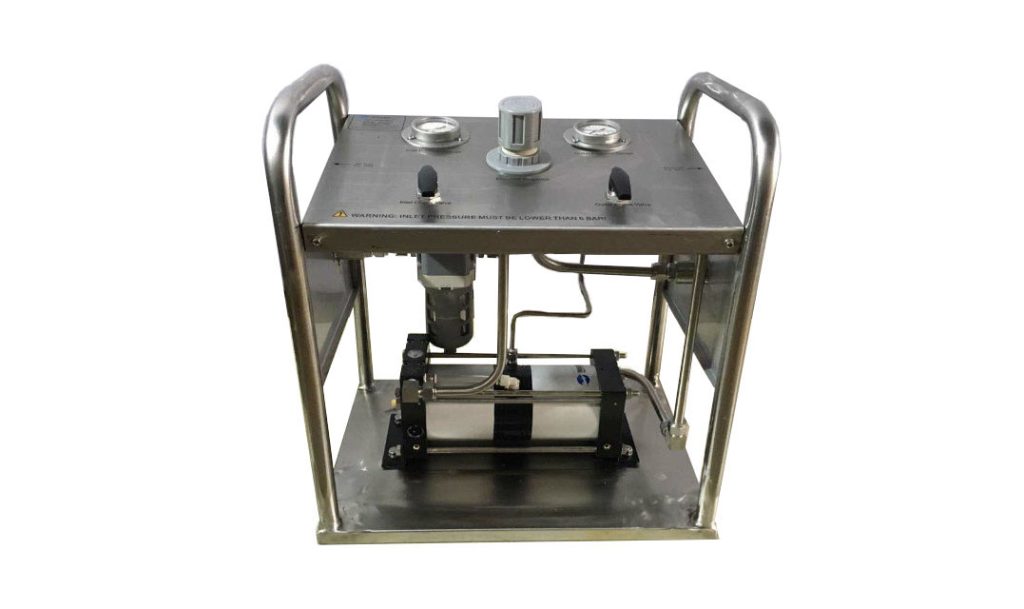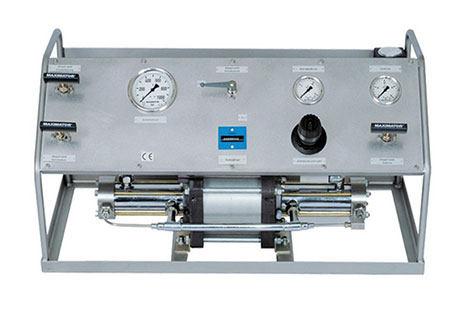What Should Be Paid Attention To When Using And Maintaining The Gas Booster Pump
The gas booster pump drives and creates the high-pressure fluid at the small-area piston end, which can be used to compress air and other gases, using the low-pressure gas at the large-area piston end. By altering the driving gas pressure, the output gas pressure can be changed steplessly. So what aspects of using the gas booster pump should we be aware of?

6 points when using the gas booster pump
1. An oil-water separator must be utilized to remove condensate, oil stains, or other pollutants before compressed air enters the booster pump as the driving gas;
2. The gas input port and high-pressure output port of the pump must be fitted with filters since water may condense out of the pre-increased gas (hydrogen, nitrogen, helium, etc.) after pressurization and wear will also occur in the pump;
3. The equipment can directly inflate the equipment through the one-way valve, saving inflation time, if the pressure in the gas at the output end is lower than the pre-increased gas pressure at the input;
4. Taking into account the various operating circumstances, the equipment’s output high pressure can be preparedly stored in the high-pressure gas tank (please consult the technical engineer for the volume of the gas tank). The pressure lowering valve is employed to modify the outlet pressure in accordance with the pressure specifications of the gas equipment;
5. The gas booster pump’s compressed air flow is approximately twice that of the pump’s outlet side (the pre-increased gas of the booster equipment will be lost in the middle due to pressurization);
6. The frequency of use affects the gas booster pump’s service life. Therefore, if the equipment must run continuously for a prolonged period of time, please describe it in working order. Our technology department will then debate and choose the type of pump that will significantly lengthen the service life of the pressurized gas pressured equipment.
Requirements for operating pressure of gas booster pump
The driving air pressure must be set to between 3 and 8 bar when the gas booster pump is in use, and its economical working pressure is 6 bar. Additionally, in order for the driving cylinder and reversing valve of the booster to function effectively and for the sealing ring to have a longer lifespan, the driving air pressure needs to be kept clean, dry, and free of moisture.
To guarantee the cleanliness of the pressured gas medium and provide supplementary protection, a filter is pressed into the IN (inlet) of the pressurizing portion of the gas booster pump. In addition, it is suggested to install exploding discs and other safety prevention measures if the pressure at the high-pressure exit is too high. If a buffer tank is required at the high-pressure outlet, a pressure vessel with a pressure bearing value higher than the rated output pressure of the pump shall be purchased (with a pressure vessel certificate).

Requirements for gas source of gas booster pump
The gas booster pump must be supplied with a filter and an oil mist, or what is known as a triplet, because it is powered by a compressor air source (2-8bar), and compressed air typically contains a small amount of moisture that can harm the pump’s reversing valve. Making ensuring the driving gas source is clear of pollutants and other particles is also important. The cylinder block and reversing valve should be lubricated and driven using turbine oil, such as vg32, which should be added inside the oil mist. The interior aging of the sealing ring will be accelerated by additional oil.
The typical gas booster pump can withstand temperatures between -22 and 85 °C. It cannot be started or utilized if the temperature is too high before cooling. Use the high-temperature pump in accordance with the directions.
Gas booster pump maintenance attention
The gas booster pump requires testing and is simple to maintain. The pump’s interfaces have been installed and are completely sealed. When doing maintenance, it is required to turn off the driving air source, adjust the triplet air pressure so that it rises gradually, and make a decision after seeing a change in the pump’s growing pressure. The driving air pressure determines how the output pressure can be changed.
To guarantee the cleanliness of the pressured gas medium and serve as secondary protection, a filter is fitted at the in (inlet) pressure of the pressurized component of the gas booster pump. In addition, it is suggested to install safety protection measures like exploding discs if the pressure at the high-pressure exit is too great. If a buffer tank is required for the high-pressure exit, make sure to purchase a pressure vessel with a pressure bearing value higher than the pump body’s rated output pressure (with a pressure vessel certificate).
When maintaining the gas booster pump once more, air pressure cannot be used. The drive should be stopped, the inlet pressure turned off, and the high output pressure released. Additionally, it is advised to speak with our professionals or do maintenance while watching a video.





